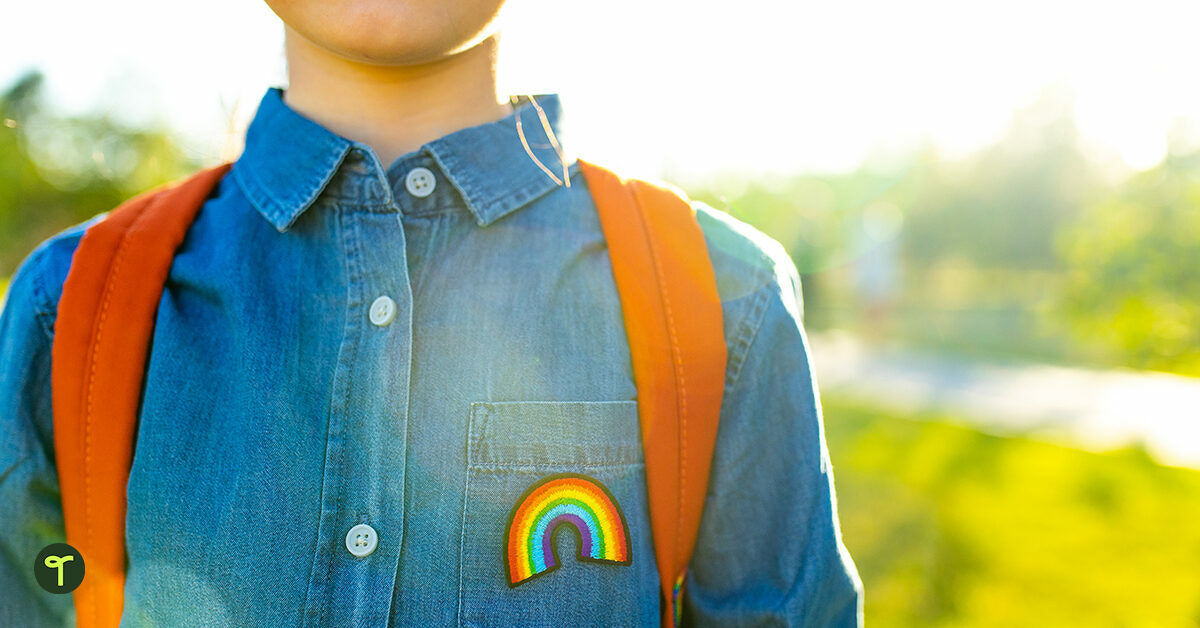Do you ever find yourself standing in front of the classroom and saying “OK, boys and girls” or something similar? Teachers have been saying some version of this phrase for about as long as classrooms have been coed. But maybe you’re looking for gender-neutral terms you can use in your classroom?
After all, an increasing number of education experts and professional educator organizations are calling for教师增加gender-neut的使用ral languagein the classroom in order to be more inclusive. So what does that mean for you, and more importantly, what sort of gender-neutral terms should you be using in an elementary school setting?
The language we use with kids has a direct impact on their understanding of gender. One study completed in a pre-school setting in 2010 by Penn State researchers, for example, looked at groups in which preschool老师要么使用性别中立语言or used gendered language. The researchers determined that kids in the gendered language group were less likely to play with children of the opposite gender and were more likely to invoke gender stereotypes relative to the gender-neutral language group.
同时,另一项研究研究了与7岁儿童的性别中立语言使用, having one group of kids use gender-neutral toys, bathrooms, and nicknames, and introducing them to professionals who subvert traditional gender roles, from female mechanics to male makeup artists while another group had a traditional classroom setting. The researchers found that the kids in the gender-neutral group had a boost in female self-esteem and there was overall encouragement of a more level playing field.
教室中如何使用性别中立语言?
使用性别中立的语言作为老师,并不意味着您完全忽略了“男孩”和“女孩”一词。这些不仅是这些常见字that students learn in elementary school, but many kids will still use these terms to self-identify.
Instead using gender-neutral terms to address students or in your assignments is simply a means to eliminate assumptions about someone’s gender identity based on appearance. Using gender-neutral terms in an elementary school classroom promotes inclusion by teaching your students these terms to use with their own classmates, as well as creating a nurturing environment for all students.
Gender Neutral Terms to Use in the Classroom
When you’re addressing a group of students, the experts at the Human Rights Campaign recommend using包容性术语该班级整体解决。
换句话说?尽量避免依靠性别术语,例如“男孩和女孩”,“女士和先生们”,甚至是“你们”。当然,您仍然需要讨论学生群体,因此您可能想为一群人尝试其中一些性别中立的术语,包括一些有趣的版本,这些版本会让您的孩子笑:
- Readers
- Scientists
- Citizens
- Mathematicians
- 小爱因斯坦
- Possums
- Cool Cats and Kittens
- Scholars
- 你们
- All y’all
- 全体人员
- 地球(用“问候”开始)
- 伙计们
- People
- Peeps
- Peepadoodles
- 每个人
- Friends
- Mateys (Best when paired with ahoy!)
- Mates (Add a g’day at the start)
- Friends
- Campers
- 朋友
- Team
- Epic humans
- Awesome humans
在与学生或写单词问题时讨论单个人时,请避免在-man或-woman中结束单词,并在不需要分配的情况下避免分配性别。例如,这可以消除孩子在由单亲父母抚养时被遗忘的问题,并避免对特定职业的性别刻板印象。例如:
- Instead of mother or father, say parent.
- Instead of spaceman, say astronaut.
- Instead of postman, say postal worker.
- Instead of Congresswoman, say member of Congress.
- Instead of waitress, say server.
What aboutgender-neutral pronouns?以下是全国英语教师理事会的一些建议:
- Avoid using “he” as a universal pronoun.
- 当性别未知时,不要说“他或她或她”,而是使用“他们/他们/他们”。
- Respect students’ pronouns.
您用什么术语来解决课堂上的学生群体?
Banner image via shutterstock/yurakrasil





